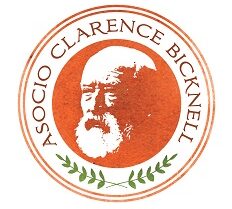Clarence Bicknell (1842-1918) created year-after-year hand-drawn vellum-bound albums all featuring the wild flowers of the area. One is the Casa Fontanalba Visitors’ Book, available in print since 2017, is a large format album in which his guests signed their names opposite a watercolour of a mountian flower. This smaller format album, published July 2022, The Book of Guests in Esperanto, was the vehicle for Clarence to combine his artistic talents with a bit of humour while promoting the universal langauge Esperanto. He wrote descriptions of selected friends, family and visitors in Esperanto on the left page and painted watercolours of flowers on the right, frasmed with arts-and-crafts motifs and frames in matching colours. Individuals range from eminent botanists and archaeologists to three dogs: Leo, Capi, and Clarence’s much loved Mahdi. The page for Emile Cartailhac shows how proud Clarence was that the eminent archaeologist visited the rock engravings of the Val Fontanalba. Cartailhac’s initials ‘E.C.’ are illuminated with features from the rock art including the plough and oxen. Read more below the gallery of images.


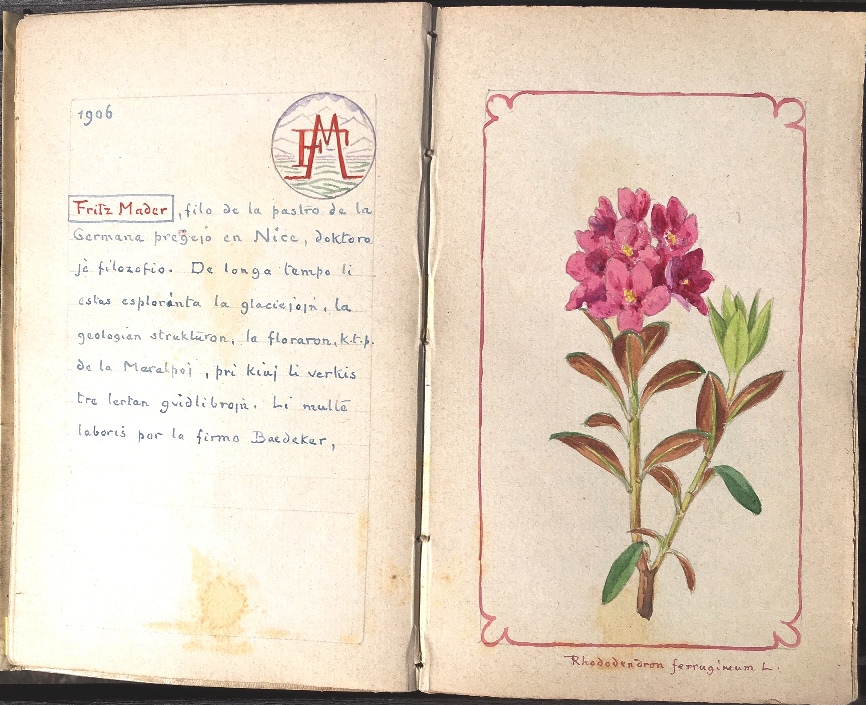
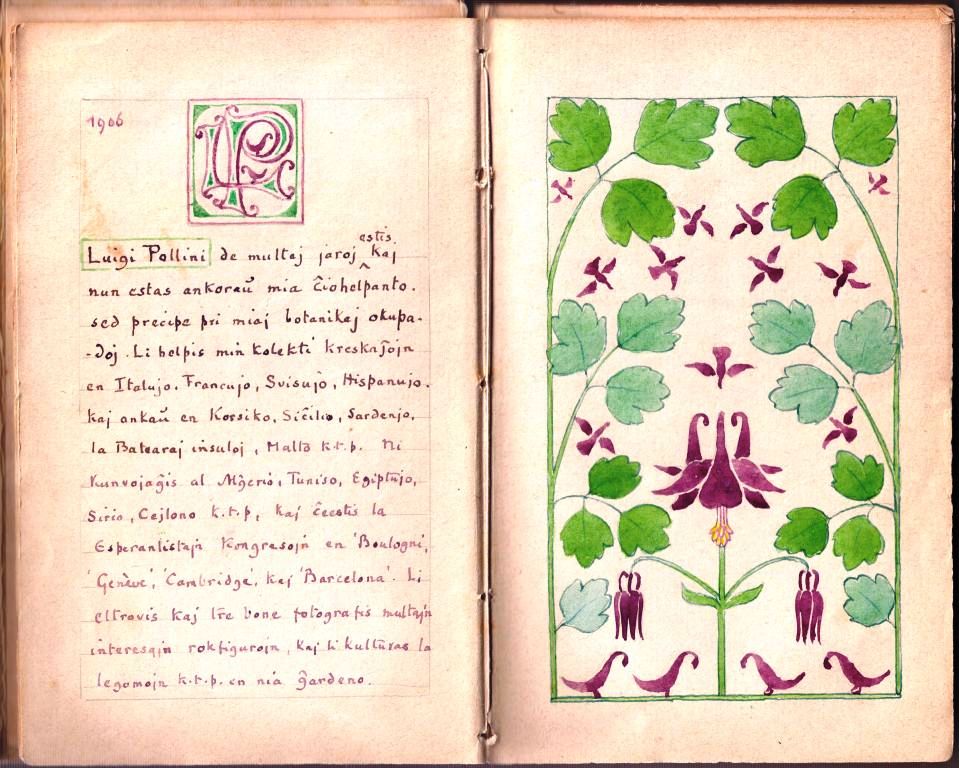



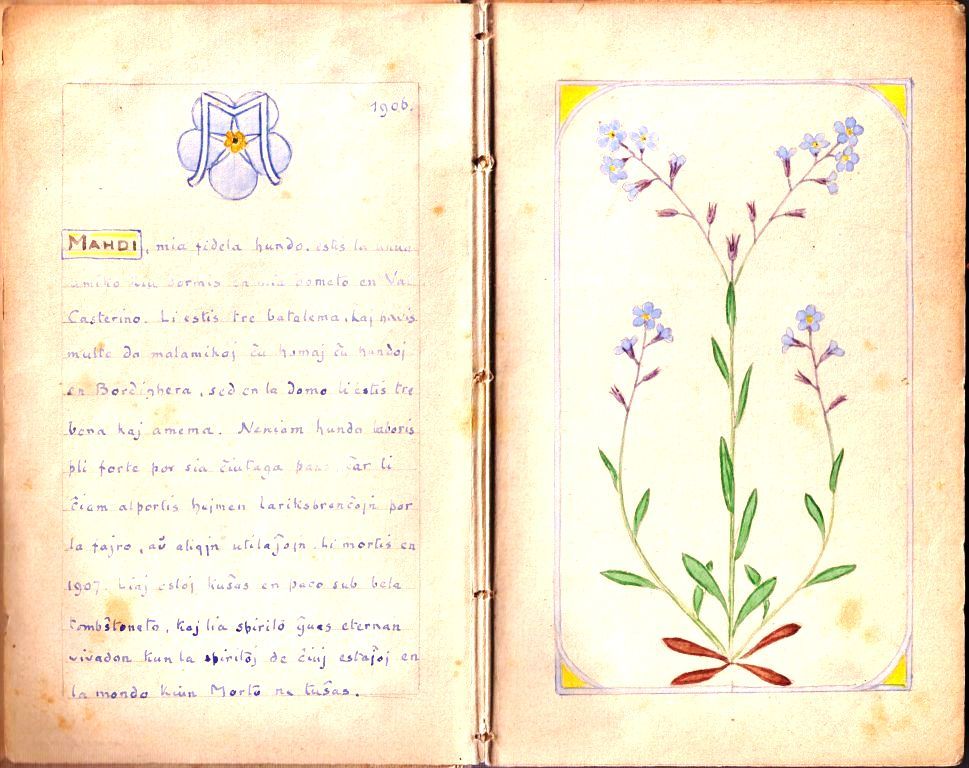

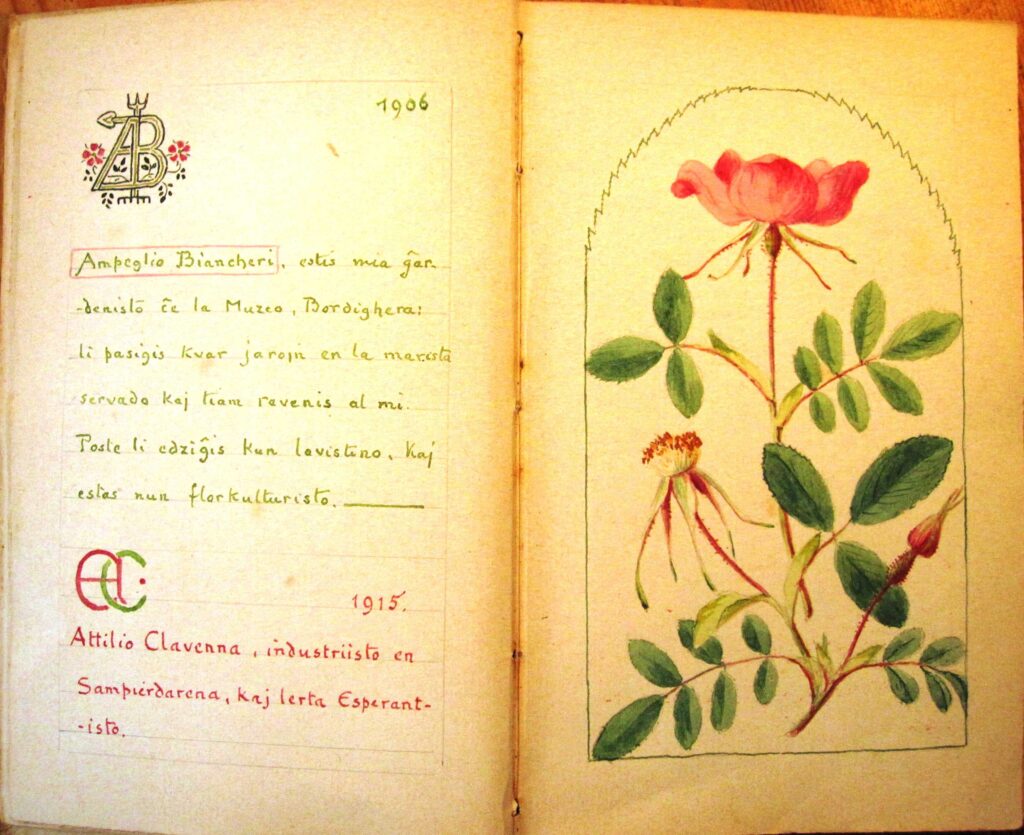

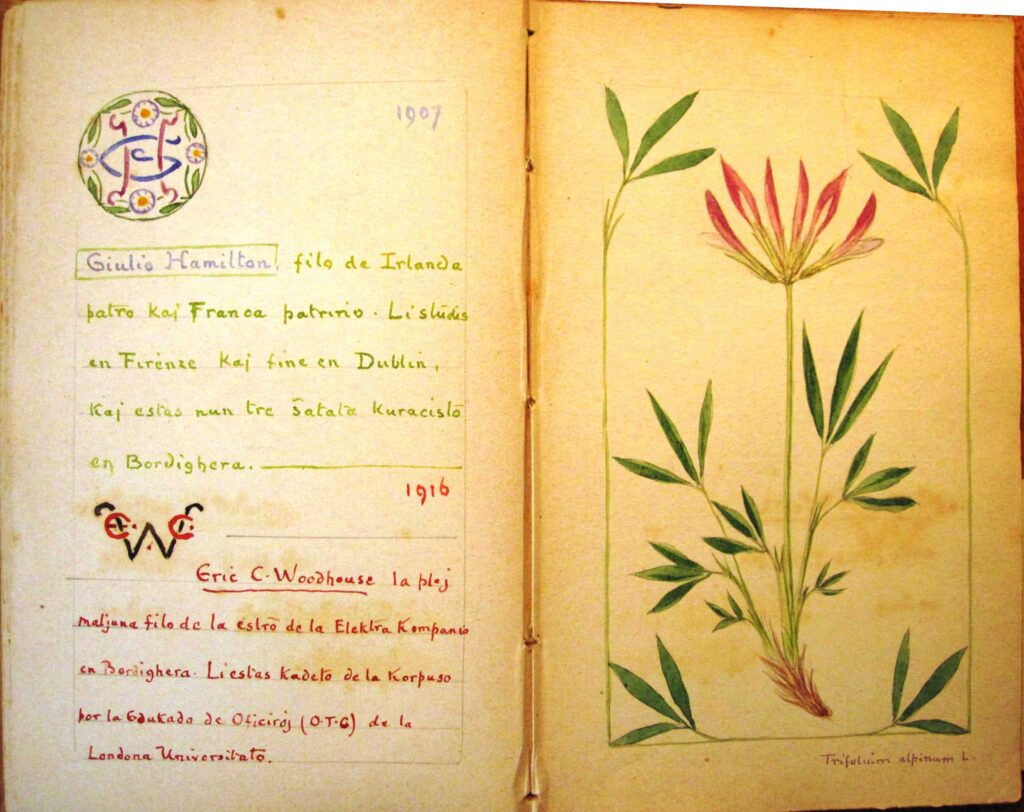





Clarence’s own description of his Casa Fontanalba, written in 1916, contains a reference to this Book of Guests in Esperanto. “The walls are painted with Laburnum & dandelion and there is a deep dado with the initials of all the different people who have slept in the house. There have been about 110 up to this point. A short biography with these initials is written in Esperanto in a book for the information of posterity.”
Susie Bicknell appraised this book among others in her article about Clarence’s art at https://clarencebicknell.com/wp-content/uploads/clarence_bicknell_his_art_susie_bicknell.pdf.
Nicolas Bell’s short note for his blog to accompany the exhibits of Clarence’s work in the Wren Library of Trinity College Cambridge, the only time our book has been seen in public. Bell wrote “The Book of Guests in Esperanto provides potted biographies of several of Clarence’s friends in Esperanto. His notes are on the left page with their initials illuminated and a flower in a matching border on the right. Clarence was a great believer in the universal language Esperanto and felt it could be a formula for world peace. He attended international congresses, taught it to friends and wrote poems and hymns. There are pages ranging from eminent botanists and archaeologists to three dogs in the family. The page displayed is for his nephew Arthur Berry, lecturer in mathematics at Cambridge and sometime Vice-Provost of King’s College”.https://trinitycollegelibrarycambridge.wordpress.com/2018/06/07/a-botanical-watercolourist-at-trinity-clarence-bicknell/
In early 2022, after on-going and enthusiastic support from Clarence Bicknell Association Vice-Chairman Graham Avery, we took the decision to publish a print reproduction of the Book of Guests in Esperanto to be available to the public. The advances by Amazon KDP in their print-on demand service, the low initial costs, availability world-wide and Marcus’s positive experience with three other books done in this way, influenced our decision to use this print-on-demand service. The 8×5 inches book with 204 pages includes translation of each Esperanto text into English, French and Italian, an introduction to the book in all four languages and an index of names. Created between 1906 and Clarence’s death in 1918, the sole original of this book is in the Bicknell family collection and is seen for the first time in this life-size reproduction book available on Amazon worldwide and in specialist bookstores.
Marcus Bicknell, 30 Sept 2023
